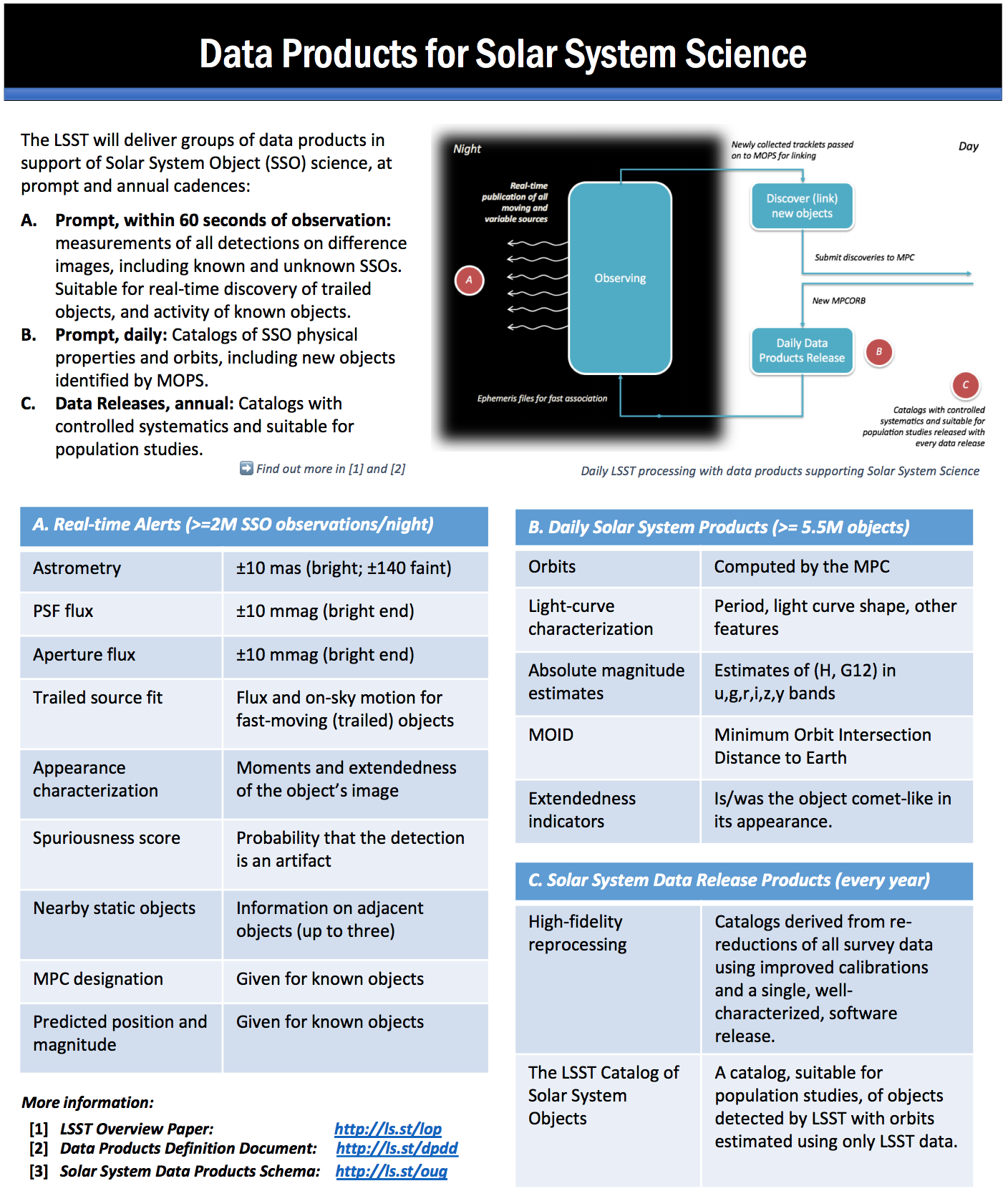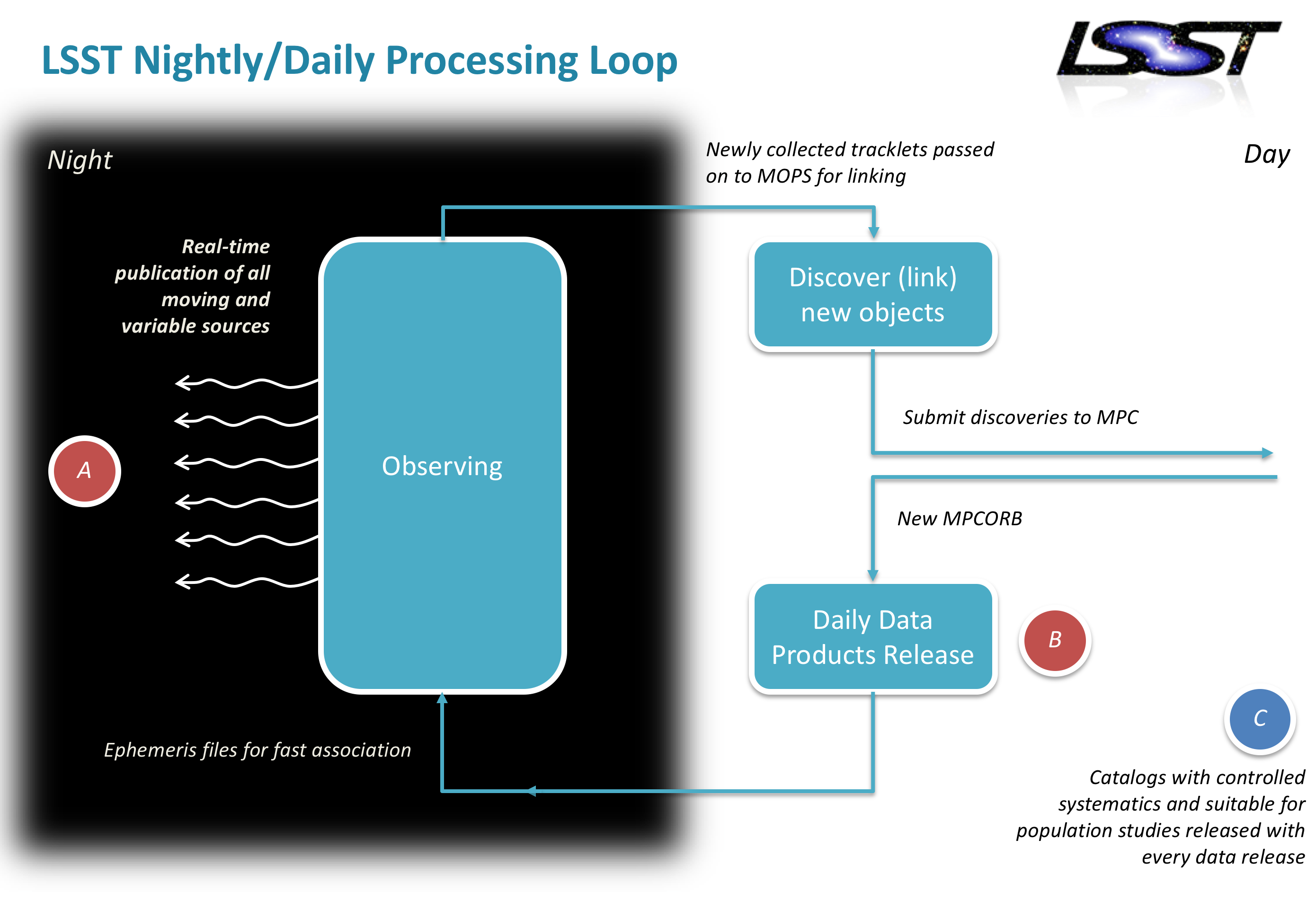This is the page of the Solar System Processing team (Ari Heinze, Joachim Moeyens, Mario Juric), tasked with defining the delivering finished DM Products (i.e., software, documentation, operating procedures) needed to deliver the LSST Data Products to support the Solar System Science. It can be reached through the shortener via http://ls.st/ssp (mnemonic: solar system processing).
High-level Overview
| Data Products | Pipelines |
|---|---|
High level overview is at http://ls.st/doc-29545, screenshotted below: |
Solar System Data Products
The overview can be found in the Data Products Definition Document.
The detailed schema is at https://docs.google.com/spreadsheets/d/1E0rTlvuJC0CvpLNsuWLK0x70uhpZww4v6GB5QkiQr-Q/edit#gid=1982710437

